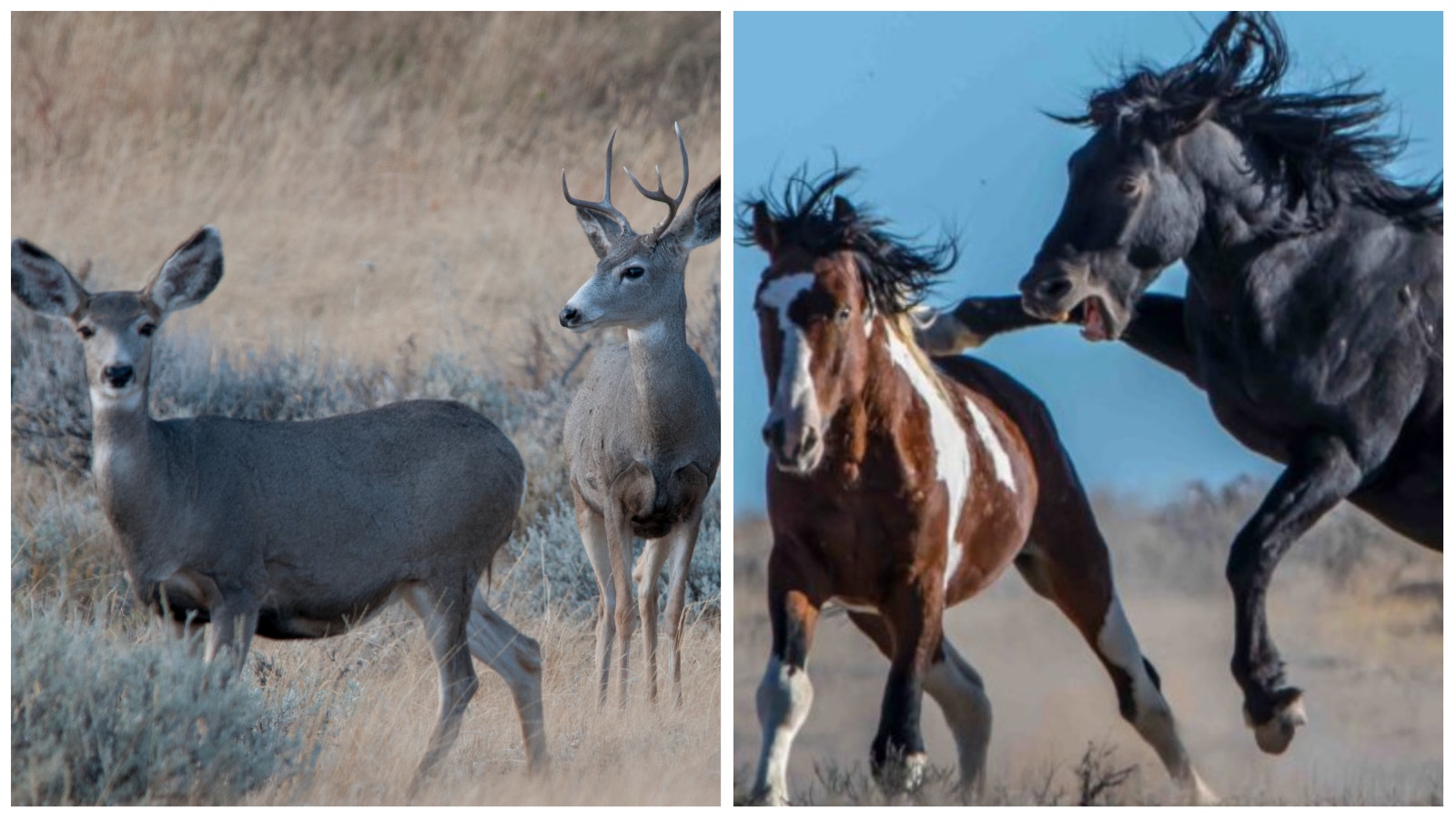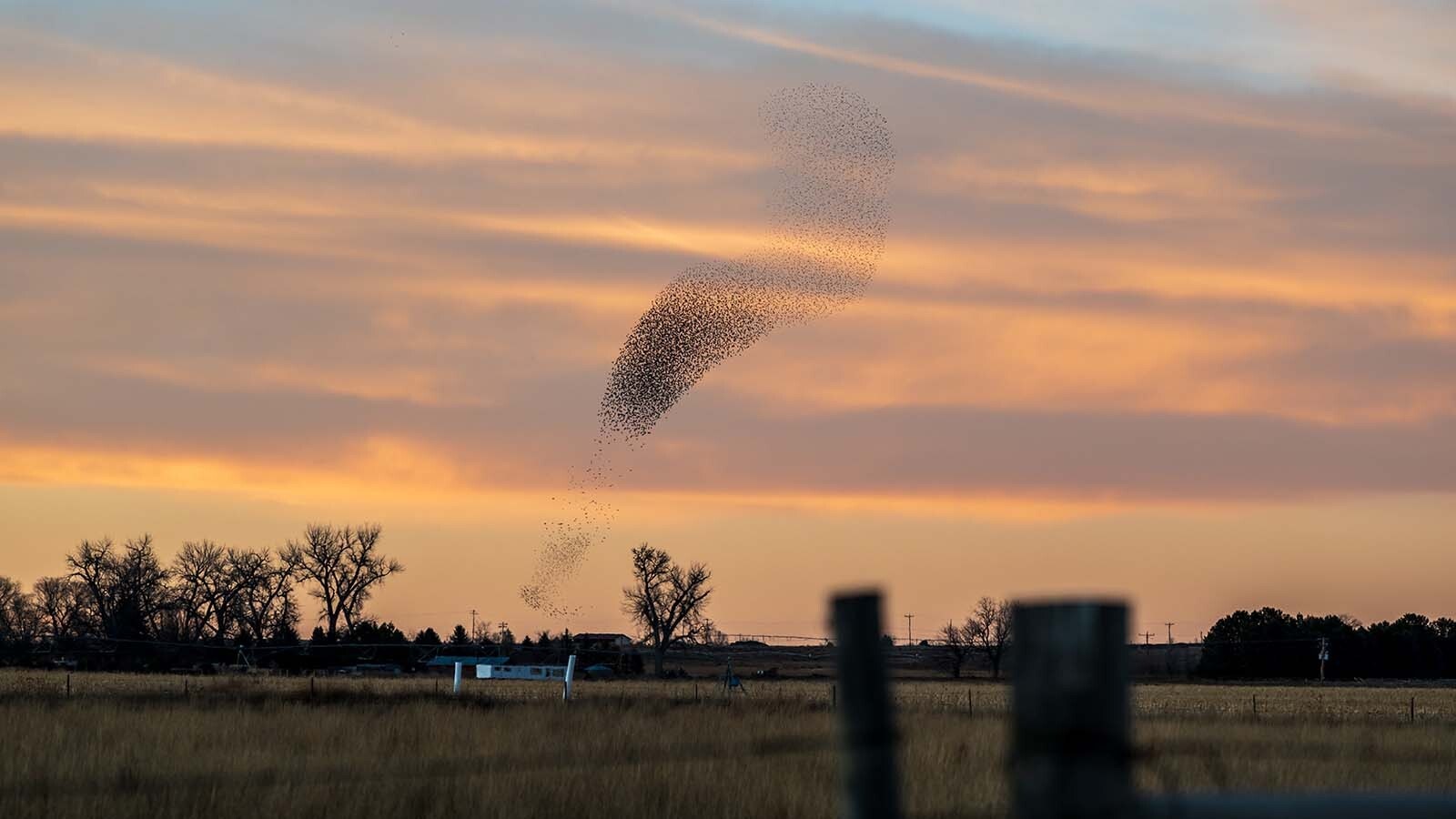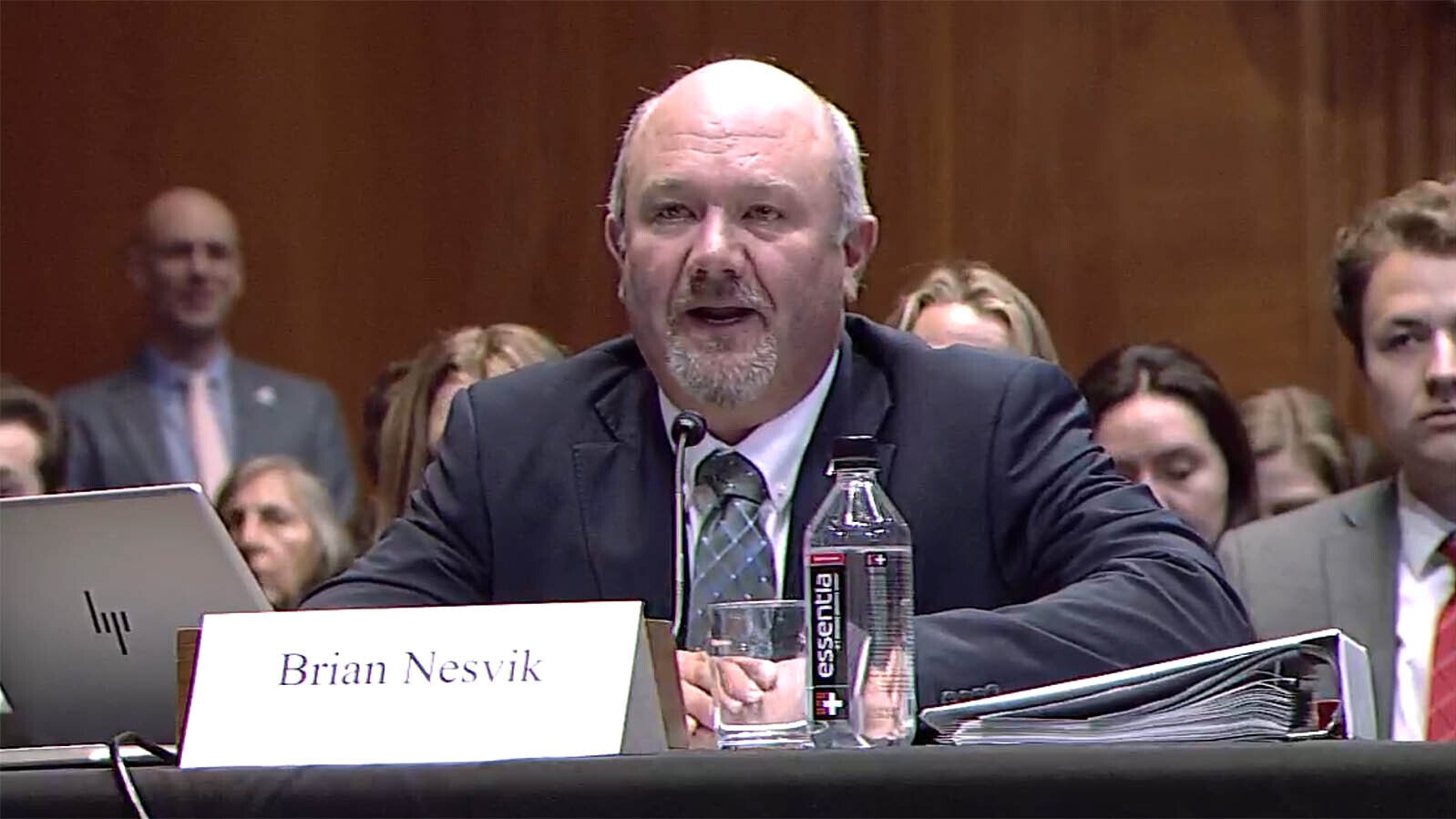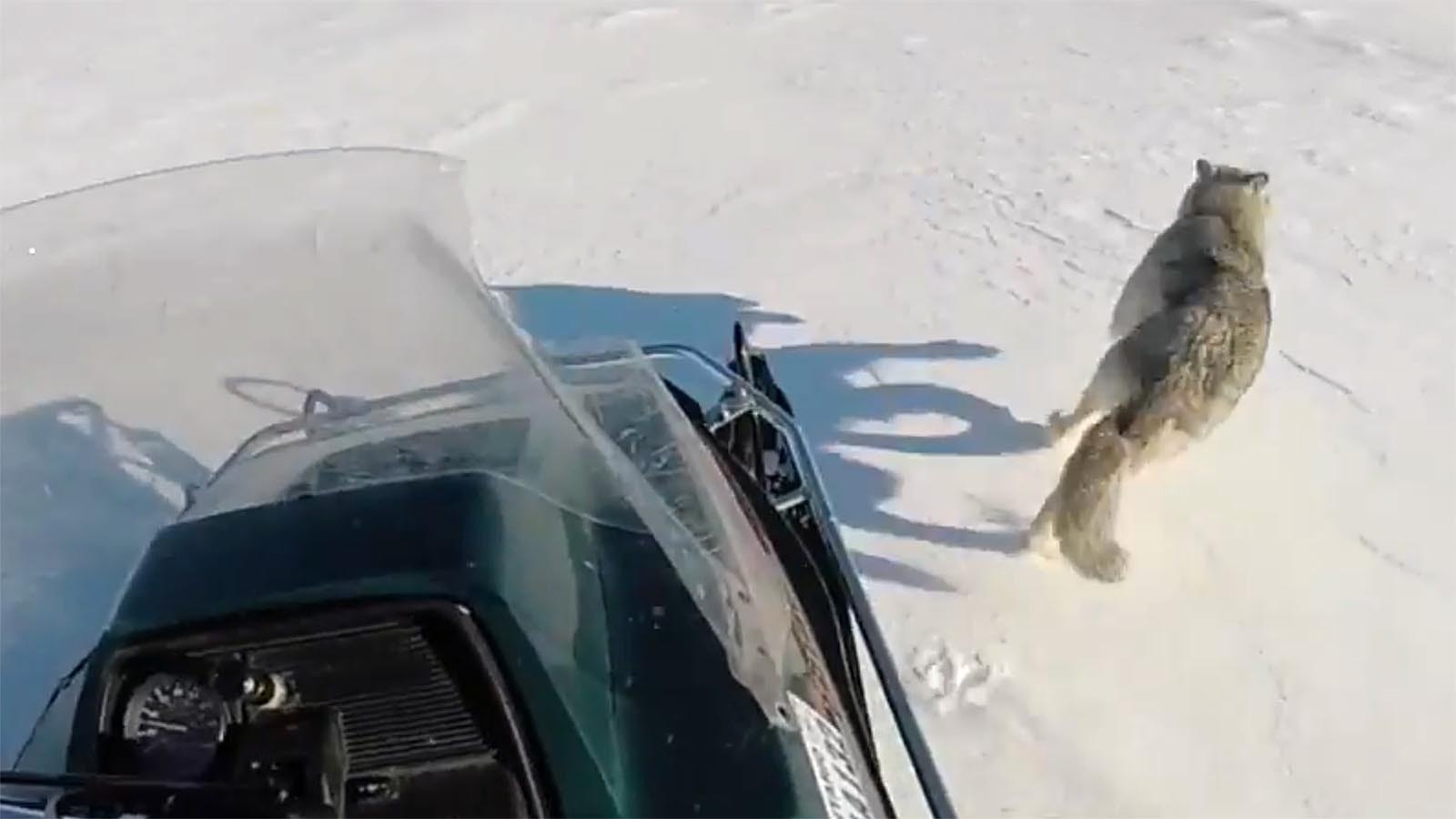Across some of Wyoming’s vast prairies and badlands, two species iconic to the West – wild horses and mule deer – compete for food and water.
The deer are coming out on the losing end, a Wyoming hunter and deer conservation advocate said.
“It’s a free-for-all buffet on the landscape. It (the presence of horses) is certainly having an effect on the landscape and the groceries for deer that this landscape produces,” Josh Coursey, the co-founder, president and CEO of Muley Fanatics, told Cowboy State Daily in a recent interview.
The horses, commonly called mustangs, can also be hard on water sources and the adjoining riparian areas – or strips of greenery near the banks of small springs and streams – upon which the deer depend, he said.
“They (horses) can get into a springhead and stomp it until it no longer exists. And that damages the riparian areas. So, it’s a trickle-down effect, no pun intended,” Coursey said.
Horses are all-around grazers, he said, whereas mule deer browse on only specific plants, such as mountain mahogany, sage brush and buck brush. So, when forage gets sparse, the deer simply can’t compete.
There are thought to be roughly 80,000 mustangs scattered across 10 western and southwestern states, according to information posted online by the Bureau of Land Management, which has jurisdiction over the animals. Nevada has the most – nearly half of the mustangs live there. In 2021, the BLM rounded up about 4,100 wild horses in Wyoming, thought to be about half of the state’s mustang population at the time. Captured mustangs are sent to long-term holding corrals, and frequently put up for adoption.
“Grey Ghosts”
Mule deer are admired and prized by hunters and wildlife enthusiasts across the West. Most of the deer by far in America are whitetails. Those deer are smaller than mule deer, but more aggressive about claiming territory and occupy habitat in virtually every part of the country, including some areas in Wyoming.
Mule deer are native to the Rocky Mountain and High Plains West; they can occupy habitat ranging from lowland sage flats and basins to high-mountain forests and subalpine zones. During the warm months, their coats can be reddish, but turn grey as fall approaches. Older, trophy-sized bucks in particular are known to be clever about evading hunters, earning them the nickname “grey ghosts.”
Mule deer have been in decline in Wyoming and across the West, with experts citing a number of factors, some of which include habitat loss and disease.
Add to that list competition with free-running horses, especially in parts of central and south-central Wyoming, Coursey said.
Wild Or Feral Horses?
Whether the mustangs are wild or feral is a matter of debate. In general terms, animals are considered wild if they’re native to the landscape and untamed. The term “feral” refers to animals that aren’t native to the landscape – those that have escaped captivity or been abandoned to live in the wild — and their descendants.
The Wyoming Game and Fish Department, which doesn’t have jurisdiction over the horses, considers them feral. An article published in the December 2021 edition of the agency’s Wyoming Wildlife magazine said that North America’s last true native horses died out long ago.
“Literature notes true wild horses went extinct in North America between 10,000 to 12,000 years ago and were never domesticated,” the article said. “(Mustangs’ linage) traces back to domestic stock introduced by Spanish explorers in the 16th and 17th centuries. Thus, the moniker ‘wild’ doesn’t truly describe the horses on the landscape now.”
From the 19th Century onward, the mustangs’ numbers have been augmented by horses that escaped or were abandoned by the U.S. Army or private citizens, according to the Game and Fish, and the horses continue to compete with native species for food, water sources and habitat.
However, the American Wild Horse Campaign, a mustang advocacy group, claims the mustangs are essentially the same species as the original North American horses, and have been loose on the range long enough to be considered truly wild, according to the group’s website. A request for more comment from the group wasn’t answered.
How To Manage Mustangs?
Prior to 1971, horses had no legal protection or agency management, and were sometimes killed at random. The Federal Wild Horse and Burro Act, passed by Congress that year, gave those animals protected status, and put them under the jurisdiction of the Department of the Interior, with the BLM named as the agency directly in charge.
From the BLM’s perspective, the mustangs frequently become overpopulated, Azure Hall, a public affairs specialist stationed in the agency’s Wyoming state headquarters, said on Tuesday in an email to Cowboy State daily.
And overabundance of mustangs can damage the habitat, threaten other species, such as mule deer, and even hurt the mustangs themselves if resources become too scarce, Hall said. Occasional roundups are the BLM’s preferred method of culling the horses’ numbers on the range.
Low-flying helicopters are the primary means of rousting the mustangs from cover and driving them toward capture points, according to a video the American Wild Horse Campaign posted on its website. The campaign considers that inhumane, because horses panicked by the choppers will sometimes injure themselves, and foals can become separated from their mothers in the confusion.
The campaign said in the video that the group favors birth control as the most humane and effective way to keep the mustangs’ numbers in check. Mares can be shot with darts that inject them with contraceptives.
Romantic Ideals vs. Pragmatism?
The BLM’s mustang management approach also skews too heavily in favor of cattle grazing on the agency’s land, the wild horse campaign said in its video.
Coursey disagreed, saying that cattle grazing permits on BLM property take into account the carrying capacity of the land and needs of mule deer and other wildlife, while horses too frequently are left to run and reproduce unfettered.
Management policies are hampered at the federal level by people outside of the rural West who have overly-romantic ideas about mustangs, he said.
“Folks that don’t live here day-to-day are thinking this is some sort of free spirit icon that can roam the land with great beauty,” he said. “This isn’t a Disney cartoon; we live this day in and day out.”





